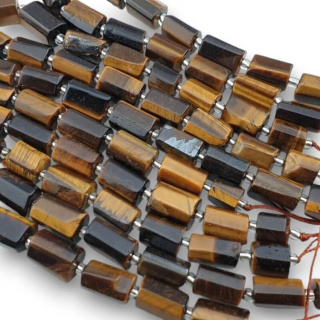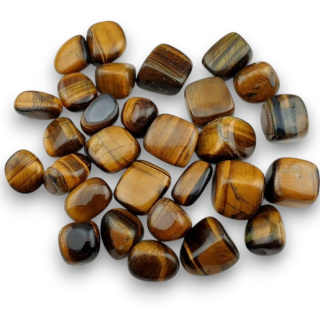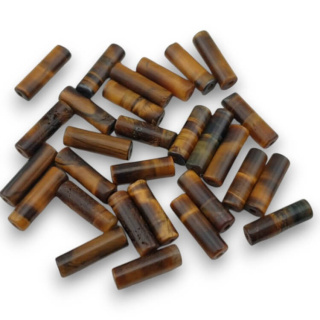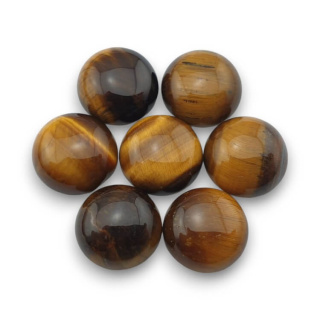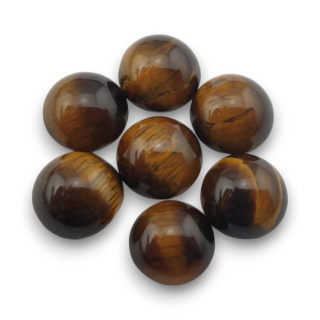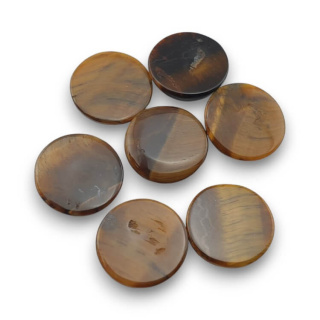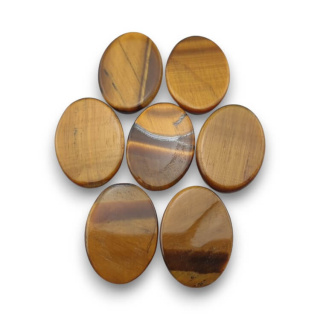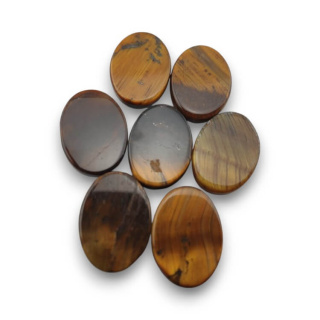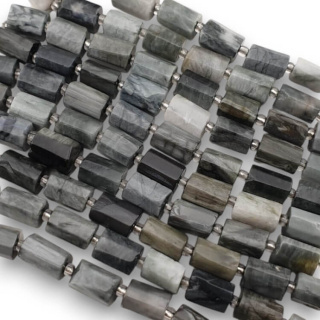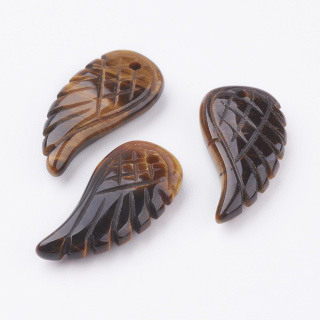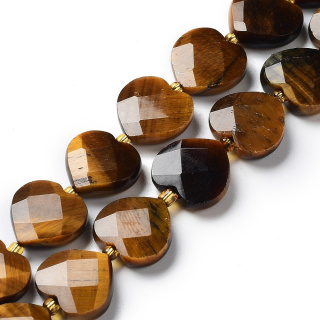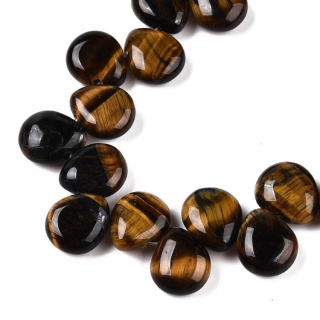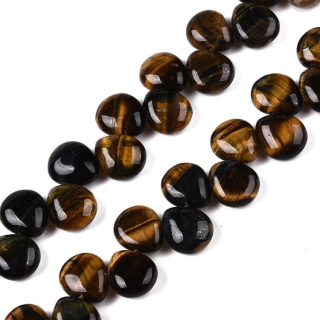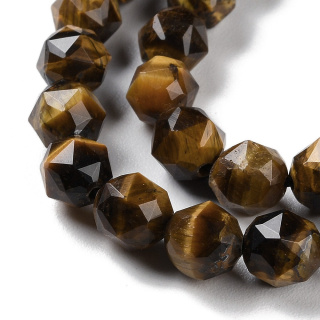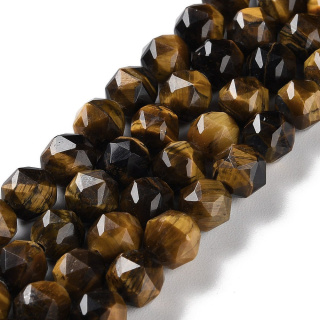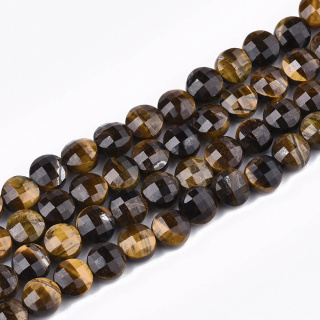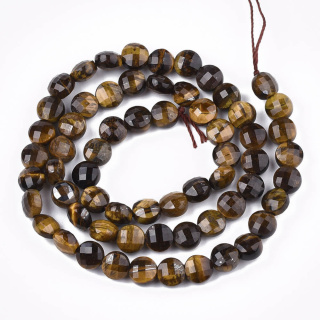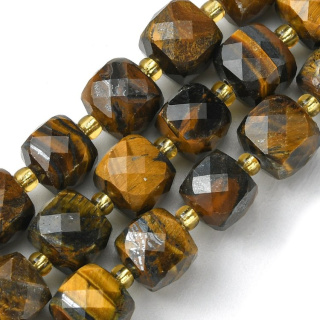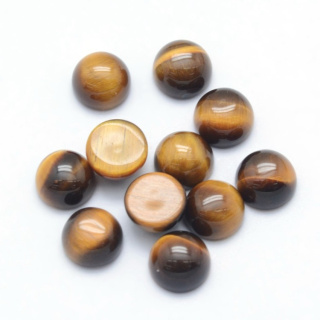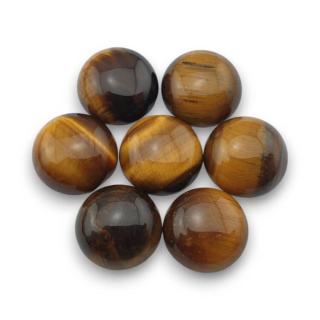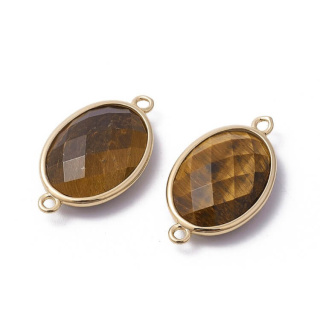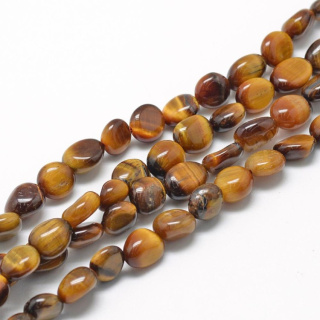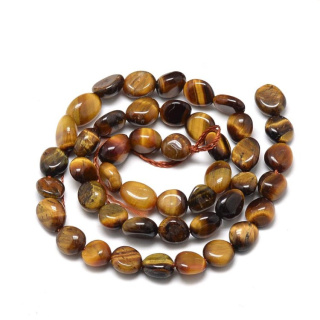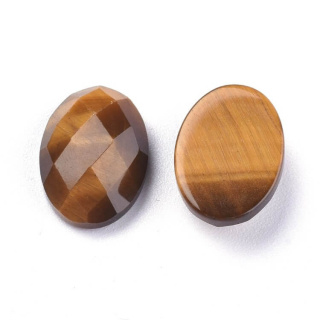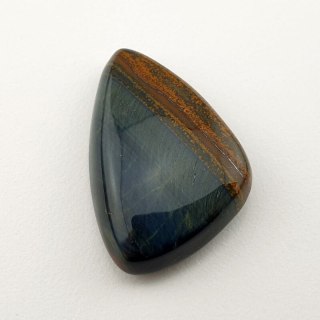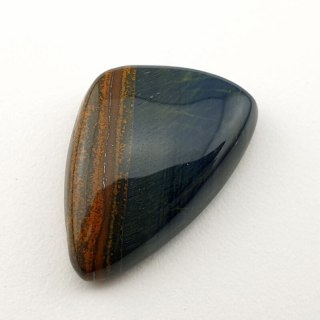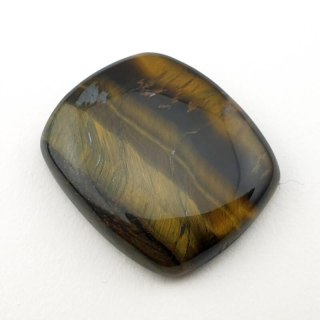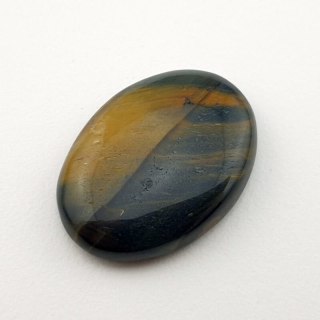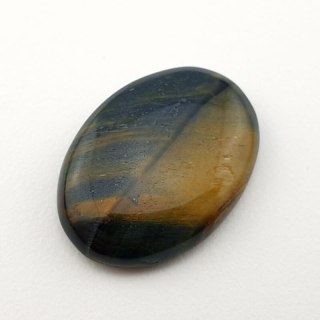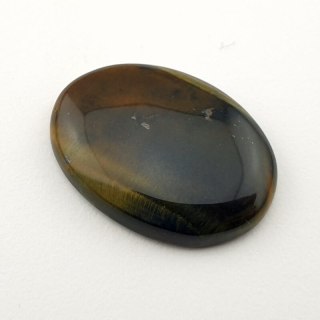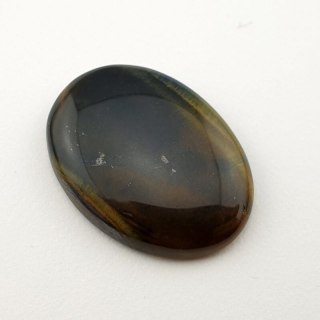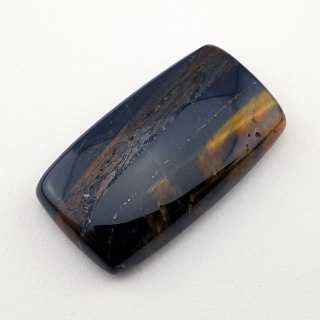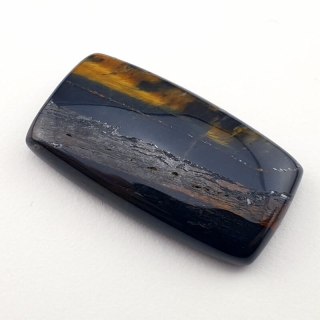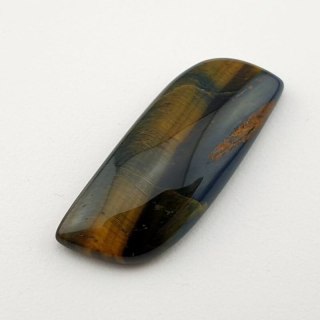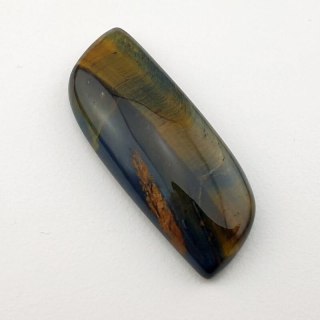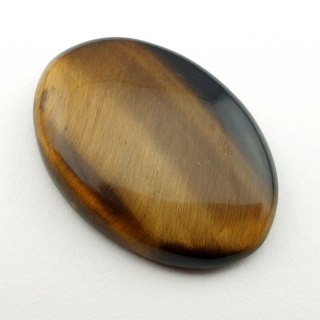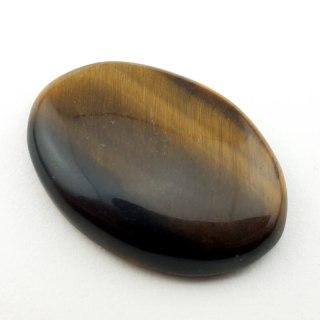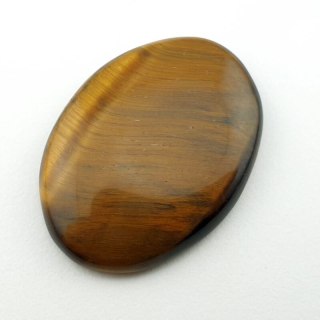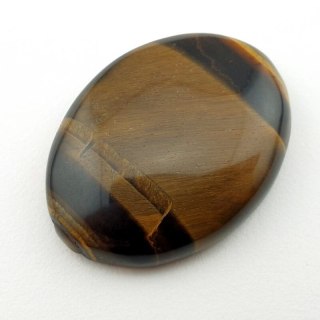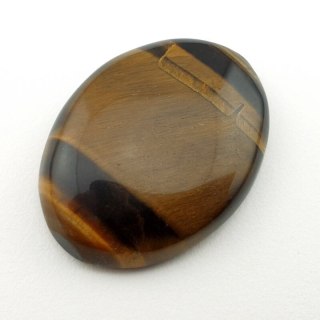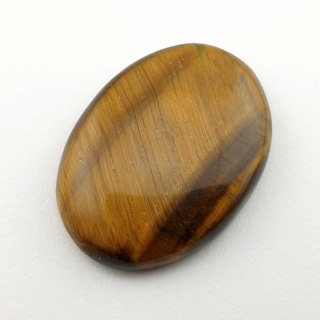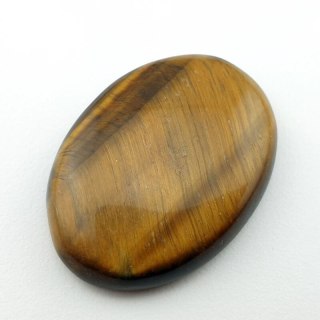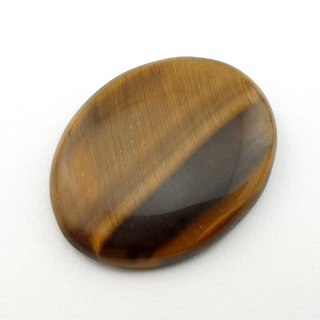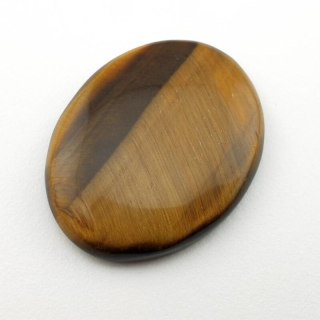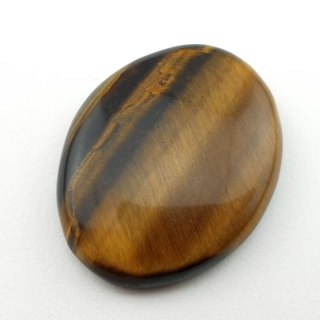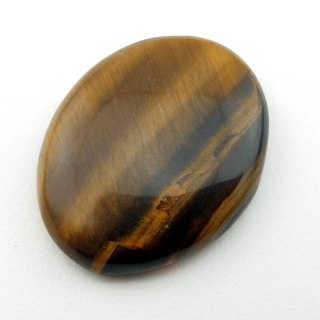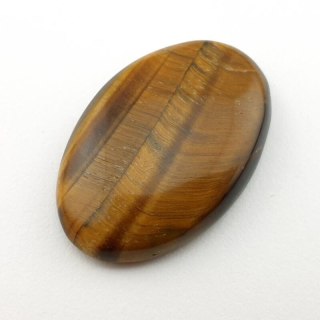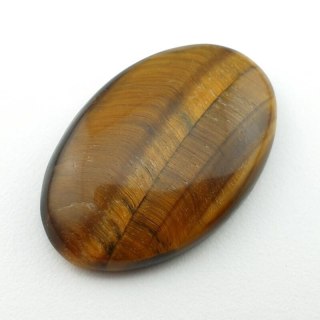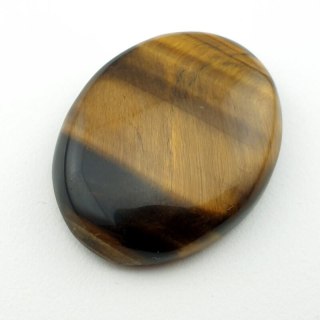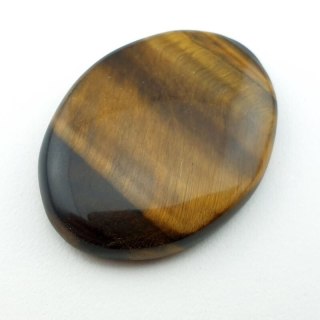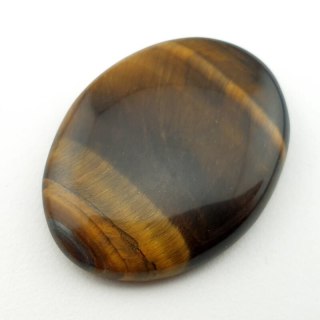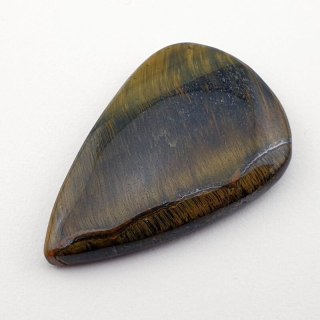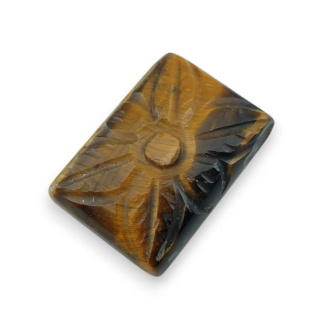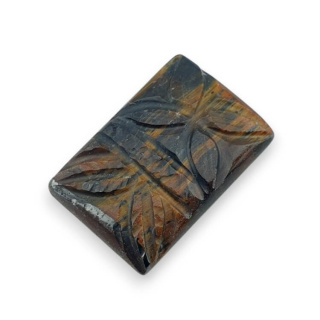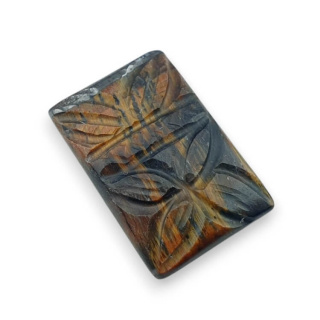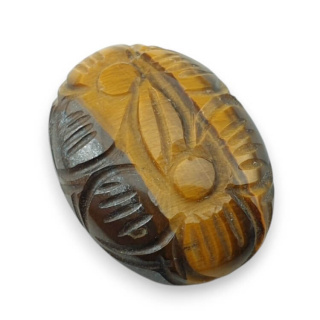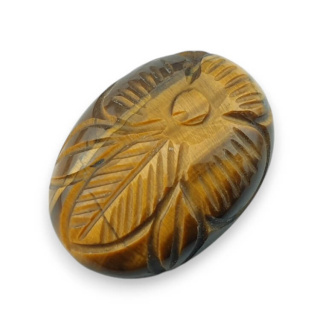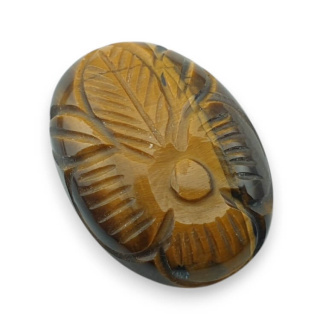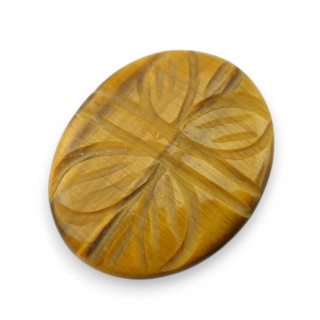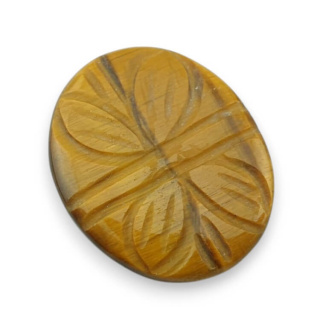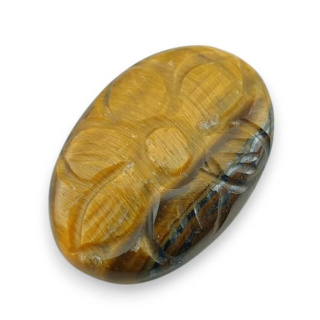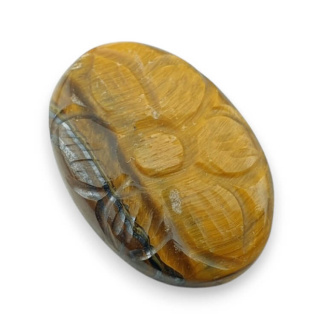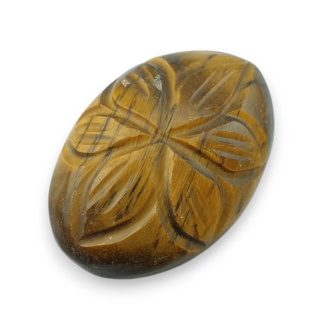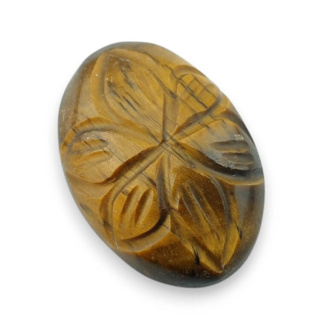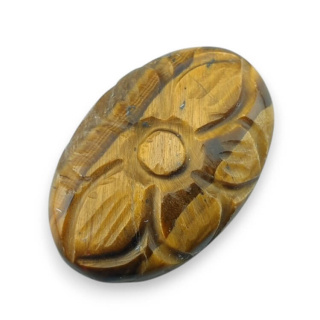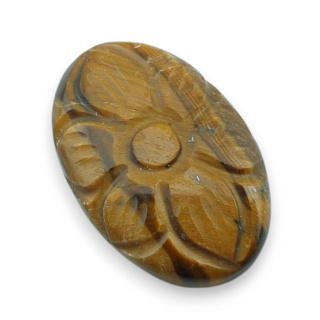Tiger's eye - a yellow-brown stone with a chatoyant effect
Number of products : 402What is tiger's eye?
Tiger's eye is a variety of quartz belonging to the silicate group. It is characterized by a unique golden-brown sheen and a cat's eye effect known as iridescence or chatoyance. This effect is caused by the reflection of light from tiny fibers of amphibole minerals and crocidolite, which have been replaced by silica.
Physical and chemical properties of tiger's eye
|
Feature |
Description |
|---|---|
|
Chemical composition |
SiO₂ (silicon dioxide) |
|
Hardness (Mohs scale) |
6.5 – 7 |
|
Density |
2.64 – 2.71 g/cm³ |
|
Color |
Golden brown, honey, sometimes with shades of red |
|
Luster |
Silky, glassy |
|
Transparency |
Opaque |
Tiger's eye is a pseudomorph of crocidolite, an asbestos mineral that has been replaced by silica while retaining its original fibrous structure. The result is a mineral with a unique appearance.
History and origin
Tiger's eye was used in ancient times as a protective talisman. It was believed to have the power to ward off evil spirits and bring wealth and courage.
The largest deposits of tiger's eye are found in:
-
South Africa – the world's main source of this mineral,
-
Namibia,
-
Australia,
-
India,
-
Mexico,
-
USA (California).
Types and varieties of tiger eye
-
Golden tiger eye – the most popular variety with a honey-colored sheen.
-
Red tiger's eye – created by heating the golden variety, giving it reddish tones.
-
Blue tiger's eye (hawk's eye) – has a blue-gray color and a delicate luster.
-
Hawk's eye – another name for the blue variety, often transitioning into the classic golden tiger's eye.
Applications of tiger's eye
1. Jewelry and ornaments
Thanks to its hardness and beautiful appearance, tiger's eye is used in the production of:
-
necklaces,
-
rings,
-
bracelets,
-
amulets.
2. Esotericism and lithotherapy
In esoteric beliefs, it is attributed with protective properties. It is believed that:
-
it gives courage and confidence,
-
it protects against evil energies,
-
helps in decision making.
3. Jewelry industry and collecting
Tiger's eye is a highly prized stone among collectors and jewelers. Some specimens exhibit a very distinct cat's eye effect, which increases their value.
How to recognize a real tiger's eye?
To distinguish a real mineral from a fake, pay attention to the following:
-
Iridescence effect – a real tiger's eye exhibits a characteristic “moving” glow when the angle of light changes.
-
Hardness – it should not be easy to scratch.
-
No air bubbles – fakes made of glass often have tiny bubbles.
-
Natural fiber arrangement – under a magnifying glass, you can see the structure of asbestos fibers replaced by silica.
How to care for tiger's eye?
-
Avoid strong chemicals – acids can damage the surface of the mineral.
-
Clean with a soft cloth and lukewarm water – mild soap can be used.
-
Avoid sudden temperature changes – they can cause microcracks.
-
Store separately from other stones – to avoid scratching.
Summary
Tiger's eye is a unique mineral with a beautiful golden sheen and a strong optical effect. It is valued both in jewelry and in the world of esotericism. In addition to its attractive appearance, it is believed to have protective properties and boost self-confidence. Its durability and unique structure make it an excellent choice for both collectors and jewelry enthusiasts.
![[{[item.product.name]}]]([{[item.product.photo.url]}] 75w)

